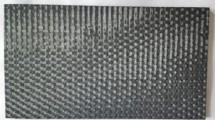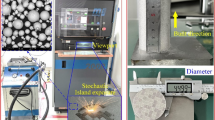Abstract
A new machining method, cryogenic-ultrasonic vibration-assisted milling (CUVAM), is proposed to improve the workability of Inconel 718. This study examined the machining mechanism of CUVAM technology at different machining parameters. The cutting force, chip, tool life, workpiece surface morphology, and surface integrity after conventional machining (CM), cryogenic cooling machining (CCM), and CUVAM were compared. The experimental data showed that cryogenic assistance could effectively improve the machining environment and coefficient of friction (CoF) and improve surface integrity. On the other hand, the cutting force increases after CCM due to the low-temperature brittleness of Inconel 718, but the ultrasonic vibration assistance in CUVAM can suppress the increase in cutting force. CUVAM well combines the advantages of cryogenic assistance and ultrasonic assistance. Compared to CM, the CUVAM method can reduce the cutting force by 36.5% and have a beneficial impact on tool life. The chipping effect was more obvious. Compared to CCM, the surface roughness after CUVAM was reduced by 39.1%. The excellent machinability of the CUVAM method was verified through the combination of experiments and theory, which provides a new method for the high-quality, high-efficiency, and pollution-free machining of Inconel 718.
















Similar content being viewed by others
Data availability
Data and material availability are available upon request from the authors.
Code availability
The code is available from the authors upon request.
References
Rahman M, Seah WKH, Teo TT (1997) The machinability of Inconel 718. J Mater Process Technol 63(1-3):199–204. https://doi.org/10.1016/s0924-0136(96)02624-6
Smak K, Szablewski P, Legutko S, Miko E (2023) Investigation of the influence of anti-wear coatings on the surface quality and dimensional accuracy during finish turning of the Inconel 718 alloy. Materials. 16:715. https://doi.org/10.3390/ma16020715
Devillez A, Le Coz G, Dominiak S, Dudzinski D (2011) Dry machining of Inconel 718, workpiece surface integrity. J Mater Process Technol 211(10):1590–1598. https://doi.org/10.1016/j.jmatprotec.2011.04.011
Bhattacharyya B, Doloi B (2020) Hybrid machining technology. In: Modern Machining Technology, pp 461–591. https://doi.org/10.1016/b978-0-12-812894-7.00006-2
Jawahir IS, Puleo DA, Schoop J (2016) Cryogenic machining of biomedical implant materials for improved functional performance, life and sustainability. Procedia CIRP 46:7–14. https://doi.org/10.1016/j.procir.2016.04.133
Musfirah AH, Ghani JA, Che Haron CH, Kasim MS (2015) Effect of cutting parameters on cutting zone in cryogenic high speed milling of Inconel 718 alloy. J Teknol 77(27). https://doi.org/10.11113/jt.v77.6877
Aramcharoen A, Chuan SK (2014) An experimental investigation on cryogenic milling of inconel 718 and its sustainability assessment. Procedia CIRP 14:529–534. https://doi.org/10.1016/j.procir.2014.03.076
Suárez A, Veiga F, de Lacalle LNL, Wretland A (2014) Effects of ultrasonics-assisted face milling on surface integrity and fatigue life of Ni-alloy 718. J Mater Eng Perform 25(11):5076–5086. https://doi.org/10.1007/s11665-016-2343-6
Peng Z, Zhang X, Zhang D (2021) Integration of finishing and surface treatment of Inconel 718 alloy using high-speed ultrasonic vibration cutting. Surf Coat Technol 413:127088. https://doi.org/10.1016/j.surfcoat.2021.127088
Hsu CY, Lin YY, Lee WS, Lo SP (2008) Machining characteristics of Inconel 718 using ultrasonic and high temperature-aided cutting. J Mater Process Technol 198(1-3):359–365. https://doi.org/10.1016/j.jmatprotec.2007.07.015
Wu Y, Wang Q, Li S, Lu D (2018) Ultrasonic assisted machining of nickel-based superalloy Inconel 718. In: Superalloys for Industry Applications. https://doi.org/10.5772/intechopen.76085
Feng Y, Hsu F-C, Lu Y-T, Lin Y-F, Lin C-T, Lin C-F et al (2020) Temperature prediction of ultrasonic vibration-assisted milling. Ultrasonics 108:106212. https://doi.org/10.1016/j.ultras.2020.106212
Xu M, Li C, Kurniawan R, Jielin C, Kwak YI, Ali S, Choo MK, Ko TJ (2022) Ultrasonic and electrical discharge–assisted milling of the Ti-6Al-4 V alloy. Int J Adv Manuf Technol 122:1897–1917. https://doi.org/10.1007/s00170-022-10010-y
Bertolini R, Tamil Alagan N, Gustafsson A, Savio E, Ghiotti A, Bruschi S (2022) Ultrasonic vibration and cryogenic assisted drilling of aluminum-CFRP composite stack – an innovative approach. Procedia CIRP 108:94–99. https://doi.org/10.1016/j.procir.2022.03.020
Khanna N, Airao J, Nirala CK, Krolczyk GM (2022) Novel sustainable cryo-lubrication strategies for reducing tool wear during ultrasonic-assisted turning of Inconel 718. Tribol Int 174:107728. https://doi.org/10.1016/j.triboint.2022.107728
Ahmed F, Ko TJ, Lee J, Kwak Y, Kurniawan R (2020) The effect of tool material grain size on the machining process in ball end milling. Int J Adv Manuf Technol 106:4411–4421. https://doi.org/10.1007/s00170-020-04925-7
Mingzheng L, Changhe L, Huajun C, Song Z, Yun C, Bo L et al (2022) Research progress and application of low temperature and minimal quantity lubrication processing technology. Chin J Mech 33(05):529–550. https://doi.org/10.3969/j.issn.1004-132X.2022.05.002
Ahmad N, Ghiaasiaan R, Gradl PR, Shao S, Shamsaei N (2022) Revealing deformation mechanisms in additively manufactured Alloy 718: Cryogenic to elevated temperatures. Mater Sci Eng 849:143528. https://doi.org/10.1016/j.msea.2022.143528
Lequien P, Poulachon G, Outeiro JC, Rech J (2018) Hybrid experimental/modelling methodology for identifying the convective heat transfer coefficient in cryogenic assisted machining. Appl Therm Eng 128:500–507. https://doi.org/10.1016/j.applthermaleng.2017.09.054
Wang F, Wang Y (2021) Cleaner milling on Ti-6Al-4V alloy cooled by liquid nitrogen: external spray and inner injection. Int J Adv Manuf Technol 112:1193–1206. https://doi.org/10.1007/s00170-020-06440-1
Mathew J, Srisailam S, Somashekhar KP, Suvin PS (2012) Estimation of residual stresses and crater shape in μ-EDM by finite element method. In: Volume 3: Design, Materials and Manufacturing, Parts A, B, and C. https://doi.org/10.1115/imece2012-86100
Vakili-Tahami F, Adibeig MR (2015) Investigating the possibility of replacing IN 738LC gas turbine blades with IN 718. J Mech Sci Technol 29(10):4167–4178. https://doi.org/10.1007/s12206-015-0911-6
Ahmed F, Ahmad F, Kumaran ST, Danish M, Kurniawan R, Ali S (2023) Development of cryogenic assisted machining strategy to reduce the burr formation during micro-milling of ductile material. J Manuf Process 85:43–51. https://doi.org/10.1016/j.jmapro.2022.11.036
An Q, Cai C, Zou F, Liang X, Chen M (2020) Tool wear and machined surface characteristics in side milling Ti6Al4V under dry and supercritical CO2 with MQL conditions. Tribol Int 151:106511. https://doi.org/10.1016/j.triboint.2020.106511
Yin Q, Liu Z, Wang B (2021) Machinability improvement of Inconel 718 through mechanochemical and heat transfer effects of coated surface-active thermal conductive mediums. J Alloys Compd 876:160186. https://doi.org/10.1016/j.jallcom.2021.160186
Dai X, Zhuang K, Pu D, Zhang W, Ding H (2020) An investigation of the work hardening behavior in interrupted cutting Inconel 718 under cryogenic conditions. Materials 13(9):2202. https://doi.org/10.3390/ma13092202
Funding
This research was supported by Korea Electrotechnology Research Institute (KERI) primary research program through the National Research Council of Science Technology (NST) funded by the Ministry of Science and ICT (MSIT) in 2023 (No. 23A01021).
Author information
Authors and Affiliations
Contributions
Moran Xu: Conceptualization, investigation, experiments, software, writing (preparation of the first draft), visualization
Shuo Chen: Formal analysis, investigation, visualization
Rendi Kurniawan: Supervision, validation
Changping Li: Conceptualization, methodology, resources
Rong Wei: Data curation
Hanwei Teng: Visualization
Thirumalai Kumaran: Data curation
Pil-Wan Han: Software
Tae Jo Ko: Visualization, supervision, conceptualization, investigation
Corresponding authors
Ethics declarations
Ethics approval
This is not applicable.
Consent to participate
This is not applicable.
Consent for publication
This is not applicable.
Conflict of interest
The authors declare no competing interests.
Additional information
Publisher’s note
Springer Nature remains neutral with regard to jurisdictional claims in published maps and institutional affiliations.
Rights and permissions
Springer Nature or its licensor (e.g. a society or other partner) holds exclusive rights to this article under a publishing agreement with the author(s) or other rightsholder(s); author self-archiving of the accepted manuscript version of this article is solely governed by the terms of such publishing agreement and applicable law.
About this article
Cite this article
Xu, M., Chen, S., Kurniawan, R. et al. Machinability study of cryogenic-ultrasonic vibration-assisted milling Inconel 718 alloy. Int J Adv Manuf Technol 127, 4887–4901 (2023). https://doi.org/10.1007/s00170-023-11858-4
Received:
Accepted:
Published:
Issue Date:
DOI: https://doi.org/10.1007/s00170-023-11858-4




